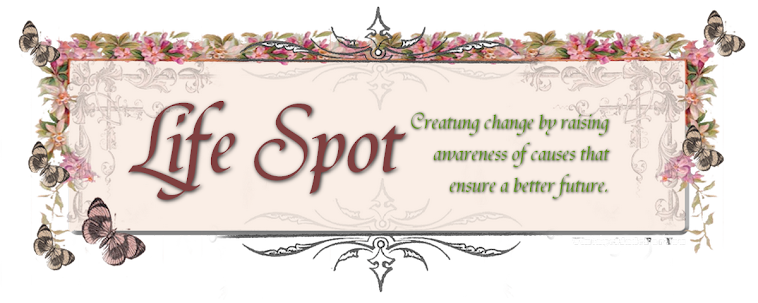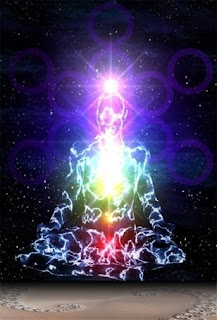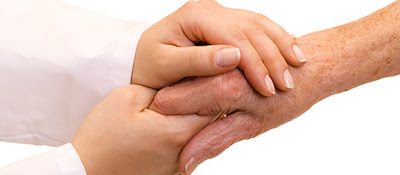HOW DO I KNOW IF MY CHAKRAS ARE OUT OF BALANCE?
Most of us have one or more of our chakras out of balance at any given point in time. In fact subtle differences may be the very reason for each of our individual personalities. However, more obvious imbalances or blockages can have a huge effect on both our physical and mental well-being.
PHYSICAL SIGNS: Sometimes the body itself will give us clues: a sore throat can be a indication that the 5th (Throat) chakra needs balancing; headaches can hint that we need to work on our 6th (Third Eye) chakra; constipation may nudge us into looking at our base.
BEHAVIOURAL CLUES: Alternatively you can draw from your behaviour. Are you often fearful, lacking in confidence and self-esteem? Work with your 3rd (solar plexus) chakra. Do you find you have sexual relationships but can’t connect on an emotional level? You may well need to focus on both the 1st (base) and 4th (heart) chakras. If you’re feeling too spacey and drifting away from the “real world” you may need to ground yourself with your 1st (base) chakra.
Most of us have one or more of our chakras out of balance at any given point in time. In fact subtle differences may be the very reason for each of our individual personalities. However, more obvious imbalances or blockages can have a huge effect on both our physical and mental well-being.
PHYSICAL SIGNS: Sometimes the body itself will give us clues: a sore throat can be a indication that the 5th (Throat) chakra needs balancing; headaches can hint that we need to work on our 6th (Third Eye) chakra; constipation may nudge us into looking at our base.
BEHAVIOURAL CLUES: Alternatively you can draw from your behaviour. Are you often fearful, lacking in confidence and self-esteem? Work with your 3rd (solar plexus) chakra. Do you find you have sexual relationships but can’t connect on an emotional level? You may well need to focus on both the 1st (base) and 4th (heart) chakras. If you’re feeling too spacey and drifting away from the “real world” you may need to ground yourself with your 1st (base) chakra.
HOW DOES CHAKRA HEALING WORK?
Our chakras--like any aspect of our selves--are energetic patterns. These patterns can be disrupted--blocked, skewed, distorted, etc. Restoring harmony and order to the energy of the chakra will return it to a state of health--i.e., will heal it.
Anything that has a harmonious, orderly energy pattern can help to entrain our energy back to a harmonious state. (Kind of like a tuning fork.)
Crystals and gemstones have that inherent harmony and order in their energy pattern. Like anything with harmonious energy, they can be used to heal.
Each type of stone resonates with a slightly different energy pattern. The energy patterns of the different stones will relate more closely to the ideal energy pattern of one of your chakras, and its pure resonance can be used to help that chakra return to its ideal vibration or energy pattern.
Like any method of healing, the user's intention is critical. A pure healing intention makes the healing work.
Anything that has a harmonious, orderly energy pattern can help to entrain our energy back to a harmonious state. (Kind of like a tuning fork.)
Crystals and gemstones have that inherent harmony and order in their energy pattern. Like anything with harmonious energy, they can be used to heal.
Each type of stone resonates with a slightly different energy pattern. The energy patterns of the different stones will relate more closely to the ideal energy pattern of one of your chakras, and its pure resonance can be used to help that chakra return to its ideal vibration or energy pattern.
Like any method of healing, the user's intention is critical. A pure healing intention makes the healing work.
WHAT CRYSTALS CAN BE USED ON EACH CHAKRA?
The colour of a stone is the key to it's healing qualities. Each colour of a stone works best on a specific chakra. Listed below are some of the stones that may be used on each Chakra.
1st: Red Jasper, Garnet, Onyx, Rubies, Apache Tear, Red Tiger's Eye, Smokey
Quartz, Obsidian, Black Tourmaline & Hematite.
2nd: Carnelian, Orange Calcite, Tiger Eye, Moonstone.
3rd: Citrine, Amber, Topaz, Yellow Calcite, Yellow Jasper.
4th: Rose quartz, Aventurine, Rhodonite, Unakite, Jade & Malachite.
5th: Aquamarine, Turquoise, Blue Lace Agate, Sodalite & Lapis Lazuli.
6th: Sapphire, Turquoise, Amethyst, Flourite, Zunzite, Labradorite, Sugilite & Sodalite.
7th: Clear Quartz, Amethyst, Moonstone, Zircon & Diamond.
The colour of a stone is the key to it's healing qualities. Each colour of a stone works best on a specific chakra. Listed below are some of the stones that may be used on each Chakra.
1st: Red Jasper, Garnet, Onyx, Rubies, Apache Tear, Red Tiger's Eye, Smokey
Quartz, Obsidian, Black Tourmaline & Hematite.
2nd: Carnelian, Orange Calcite, Tiger Eye, Moonstone.
3rd: Citrine, Amber, Topaz, Yellow Calcite, Yellow Jasper.
4th: Rose quartz, Aventurine, Rhodonite, Unakite, Jade & Malachite.
5th: Aquamarine, Turquoise, Blue Lace Agate, Sodalite & Lapis Lazuli.
6th: Sapphire, Turquoise, Amethyst, Flourite, Zunzite, Labradorite, Sugilite & Sodalite.
7th: Clear Quartz, Amethyst, Moonstone, Zircon & Diamond.
The Seven Gemstone Chakra Meditation Technique
by Eileen Nauman, DHM(UK)
Chakras are a Far East concept. Those familiar with Chinese acupuncture, meridians and nadi's, will have a good feel for what they are. To put chakras into a basic understanding, there are seven of them (what we call major chakras). You can consider them like a power station of sorts. They pull in "prana" (energy/food) from the surrounding universe, suck it in, transform it, and then "feed" not only our physical body to keep us healthy, but also feed our aura, which is composed of many fields.
The chakras are deposited in our etheric body, the auric field that is closest to our physical body. They then extend out like the cone of an ice cream cone, through the front and back of us. The chakras on the front of us are fueled by desire. The one's in the back are our will. The major chakras are positioned over major endocrine glands in our body
Each chakra has a symbolic area that it rules. Through stimulation, the opening and closing of this chakra, it draws in the energy to help us learn the lesson(s) we want to educate ourselves about this lifetime.
Not all chakras are open. Usually, the lower three, the root, navel and solar plexus, are open. As a race, we are endeavoring to open the heart chakra (universal love and compassion for all things on Mother Earth). The other chakras, known as the upper ones, the throat, brow and crown, open and close as need be.
No one has all seven chakras up and running; if you do, you are an ascended master! We may have all seven of them open and closing, however, all the time, depending upon what we've come into this body and time to learn.
One important part is keeping these chakras clean. They get 'gunked up' with our emotions, our mental perspective, for starters. Or, we get off track on our spiritual path we wanted to take. Or, we get an injury to that particular part of the body
When a chakra has debris in it (positive ions), is blocked or has been injured (spiritually, mentally, emotionally or physically), then cleaning it or them out, can help us process through the experience sooner rather than later.
I'm of the mind of: why suffer more than we need to? We don't.
I'd like to introduce the chakras. And also share what I call the 7-stone chakra meditation that I was taught many years ago, and use to this day when I'm feeling particularly "constipated" energetically in one of my chakras
I use seven gemstones; a color that will denote or symbolize each chakra. Let me introduce the chakras, and then I'll put the meditation at the end of this article:1st Chakra (Root): RED
Organs: physical body support; base of spine; legs, bones, feet, rectum, and the immune system.
Mental/Emotional Issues: Safety and security; ability to provide for life's necessities; ability to stand up for one-self; feeling at home (here on earth), and emotional support. Grounds a person; keeps them common sensed. Practical. Logical. Rational. If this chakra is damaged, the person is spacy, out-of-the-body, undisciplined, disorganized and unable to finish what they start.
Physical Dysfunctions: Chronic lower back pain, sciatica, varicose veins, rectal tumors/cancer, depression, and immune disorders.
Gemstone: Red Jasper
2nd Chakra (Navel/Spleen): ORANGE
Organs: Sexual organs, large intestine, lower vertebrae (lumbar/coccyx), pelvis, appendix, bladder, and hip area.
Mental/Emotional Issues: blame and guilt, money and sex, power and control, creativity, ethics and honor in relationships. Victim attitude. Codependence. "Poor me" attitude.
Physical Dysfunctions: Chronic lower back pain, sciatica, ob-gyn problems, pelvic/low back pain, sexual potency, and urinary problems.
Gemstone: Carnelian
3rd Chakra (Solar Plexus): YELLOW
Organs: Abdomen, stomach, upper intestines, liver, gall bladder, kidneys, pancreas, adrenal glands, spleen, and middle spine (thoracic vertebrae).
Mental/Emotional Issues: Trust, fear and intimidation, self-esteem, self-confidence, self-respect, care of others, responsibility for making decisions, sensitivity to criticism, and personal honor. Panic attacks, anxiety attacks, and known or unknown fear, are symbolic of this chakra.
Physical Dysfunctions: Arthritis, gastric or duodenal ulcers, pancreatitis/diabetes, indigestion, chronic or acute, anorexia or bulimia, liver dysfunction, hepatitis, and adrenal dysfunction.
Gemstone: Amber (fossilized tree pitch)
4th Chakra (Heart): GREEN
Organs: heart and circulatory system, lungs, shoulders and arms, ribs/breasts, diaphragm, and the thymus gland.
Mental/Emotional Issues: love and hatred, resentment and bitterness, grief, self-centeredness, loneliness and commitment, forgiveness and compassion, hope and trust.
Physical Dysfunctions: congestive heart failure, myocardial infarction (heart attack), mitral valve prolapse, cardiomegaly, asthma/allergy, lung cancer, bronchial pneumonia, upper back, shoulder and breast cancer.
Gemstone: Green Quartz
5th Chakra (throat): BLUE
Organs: throat, thyroid, trachea, neck vertebrae (cervical), mouth, teeth and gums, esophagus, parathyroid and hypothalamus.
Mental/Emotional Issues: choice and strength of will, personal expression, following one's dream, using personal power to create, addiction, judgment and criticism, faith and knowledge, and the capacity to make decisions. The ability to speak up for one's self. To speak our personal truth, no matter what the cost to us. Faith. To believe without having to see it. Blind-faith-knowing.
Physical Dysfunctions: raspy throat, chronic sore throats, mouth ulcers, gum difficulties, tempromandibular joint problems (TMJ), scoliosis, laryngitis, swollen glands and thyroid problems.
Gemstone: Sodalite or Lapis Lazuli
6th Chakra (Brow): INDIGO/PURPLE
Organs: Brain, nervous system, eyes, ears, nose, pineal gland, and the pituitary gland.
Mental/Emotional Issues: Self-evaluation, truth, intellectual abilities, feelings of adequacy, openness to ideas of others, ability to learn from experiences and emotional intelligence. Our ability to perceive and see this reality. The ability to see the macrocosm vs. microcosm. The "big picture".
Physical Dysfunctions: brain tumor/hemorrhage/stroke, neurological disturbances, blindness/deafness, full spinal difficulties, learning disabilities, and seizures.
Gemstone: Charoite or Amethyst
7th Chakra (Crown): WHITE/GOLD
Organs: Muscular system, skeletal system and skin.
Mental/Emotional Issues: Ability to trust life, values, ethics and courage, humanitarianism, selflessness, ability to see larger pattern, faith and inspiration, spirituality and devotion.
Physical Dysfunctions: paralysis, genetic disorders, bone cancer, multiple sclerosis, and amyotrophic lateral sclerosis (ALS).
Gemstone: single terminated, small quartz crystal (may be 1" or 2" long....length doesn't matter).
7-Chakra Gemstone Meditation:
1. Always have your tumbled gemstones, with the exception of the single terminated quartz crystal, in their own bowl, abalone shell, cup or pouch. That way, you know where they all are, and none of them will get lost.
2. Choose a time and place where there are no interruptions. Shut the door. Tell your family you are not to be disturbed. Take the phone off the hook or shut off the ringer.
3. I use sage to 'smudge' myself (sage emits negative ions and cleanses the aura like a dust mop would dust a wood floor), and I also pass my stones, which I have in my hand, through the smoke. Or, I may set the stones out on the altar or table, and waft the sage smoke across them with a feather.
4. Wear loose, comfortable clothes. Keep your shoes off. Lay down on the floor or lay down on your bed. Or lay prone on your favorite chair that unfolds for you.
5. Place the RED stone just above where your legs are attached to your body, near your crotch.
6. Place the ORANGE stone on your abdomen (about 2-3 inches below your belly button).
7. Place the YELLOW stone over your stomach region (about 2-3 inches above your belly button).
8. Place the GREEN stone in the center of your chest where your heart rests.
9. Place the BLUE stone in the middle of your throat.
10. Place the PURPLE stone in the center of your forehead, just above the root of your nose.
11. Place the single terminated quartz crystal, point TOWARD the center or top of your head. (You're lying down, so place the tip of it toward your head, about 1-2 inches away from your skull).
12. Close your eyes. Take three deep breaths in your nose and out your mouth.
13. Visualize silver tree roots wrapping gently around your ankles and going down through each foot into Mother Earth (about 100 to 200 feet). This grounds you.
14. Lay quietly for 20 minutes like this. If thoughts come into your head, let them come and go without any attachment.
15. When you're done, pick up the stones in REVERSE ORDER, starting with the quartz crystal, then the PURPLE stone, the BLUE stone, and so on.
16. Put your stone friends into a salt bath for 1 hour. This means placing them gently in a bowl of tepid water that has 1 teaspoon of kosher salt, sea salt in it. This cleanses them off. After an hour, pour off the salt water, wash them with fresh, tepid water, dry them off and put them back into your pouch.
I do this meditation every day when I'm under a lot more stress than usual. It can take a headache away in 20 minutes; and that's pretty impressive. It can take pain away, at least for awhile,too. More than anything, it allows the stones, which are sitting over each major chakra, to absorb any positive ions or other debris, energetically speaking, so that your chakras are getting a minor "tune-up."
If you will do this 2-3 times a week, for a month, you'll find you have more energy, your mind is clearer, sharper, more focused, and not as forgetful. It aids everyone. So, give it a try!
REFERENCE:
Anatomy of the Spirit by Caroline Myss
Warmly, Eileen
Moderator - Athena List, http://www.medicinegarden.com


.gif)




.jpg)







